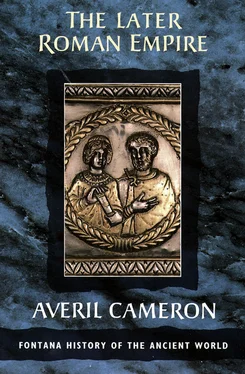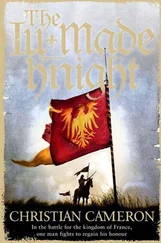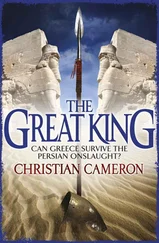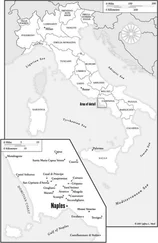As he signs off his work, Ammianus tells us that he had begun it with the year AD 96, the reign of Nerva, which is also the point at which both Tacitus and Suetonius had ended:
This is the history of events from the reign of the emperor Nerva to the death of Valens, which I, a former soldier and a Greek, have composed to the best of my ability. It claims to be the truth, which I have never ventured to pervert either by silence or a lie. The rest I leave to be written by better men whose abilities are in their prime. But if they choose to undertake the task I advise them to cast what they have to say in the grand style.
As he tells us here, he ended with the disastrous Roman defeat and death of the Emperor Valens at Adrianople in AD 378. Since the part we have, beginning at the year AD 354, late in the reign of Constantius II, comprises eighteen books in itself, and is written on a very large scale, the first part (probably up to the section on Constantine, which is unfortunately lost) must have been considerably abbreviated by comparison; some scholars have believed that he wrote two separate works, but this is unlikely. In any case, Ammianus’s focus of interest changed in the last six books, which deal in famous detail with Rome and the vices of its late fourth-century senatorial class; though he was a pagan himself, the scathing vehemence with which he condemns the love of luxury among these Roman grandees makes it unlikely that he was the recipient of their patronage, or a spokesman for a supposed senatorial ‘pagan reaction’ (see Chapter X); book 28 includes a lengthy excursus on the vices of the nobility (28.4; cf. also 14.6), in the course of which Ammianus remarks that ‘some of them hate learning like poison but read Juvenal and Marius Maximus with avidity. These are the only volumes that they turn over in their idle moments.’ There seems to be a personal note here, but his actual milieu while in Rome remains a mystery, as does the identity of his patrons, if any; there are many other details about him which remain equally obscure, for instance his exact relation to contemporary Latin writers, including the author of the mysterious Historia Augusta (see below). Nor is it clear when he began writing, or how far his conception of the work changed during a long period of travel, which lasted from the death of the Emperor Julian (AD 363) until his arrival in Rome some time before AD 384. Completion of the work came in the early 390s.
Ammianus describes himself as ‘a Greek’, and it is generally believed, though not on conclusive evidence, that he came from Antioch, a major seat of imperial administration in the east, where Latin would have been used in official and military circles. His inspiration was certainly the Emperor Julian, on whose ill-fated Persian expedition he served himself as an officer, and his books about Julian (20–25) are masterpieces of writing. Julian’s death during this campaign from an unexplained arrow shot (25.3; cf. Ammianus’ obituary of Julian, 25.4) must have been a severe blow to Ammianus himself; somehow, however, the material he had evidently collected while serving on this campaign became the basis of a grand imperial history, stretching backwards in time to AD 96 and forwards to AD 378.
Ammianus is an original. A staunch conservative in his views, he admired Julian not only for his personal qualities as a leader, but also for his attempt to revive the independence of cities. Like Julian, Ammianus disliked the centralist policies of Constantine, and his account of Constantine, which would have been a major counterpart to that of Eusebius, is a great loss. As a pagan, Ammianus was no great lover of the Christian church, and his Roman books emphasize the unseemly conduct of ecclesiastical parties in Rome in the 370s and 380s, but his judgement remained independent, and Julian’s idea of preventing Christians from teaching as a means of reducing their influence earned his criticism:
the laws which he enacted were not oppressive, and what they enjoined or prohibited was precisely stated, but there were a few exceptions, among them the harsh decree forbidding Christians to teach rhetoric or grammar unless they went over to the pagan gods. (25.4)
In general, though, even a hasty look at his choice of vocabulary and his frequently expressed personal opinions shows that he had strong prejudices; while professing to abhor any form of excess and to commend moderation in all things, he himself saw the world, and especially human beings, in lurid terms, as is shown in his famous judgement on the Emperor Valentinian (29.3), where he remarks that he had ‘two savage man-eating she-bears, called Golddust and Innocence, to which he was so devoted that he had their cages placed near his bedroom’.
Ammianus has often been criticized for his supposedly uncouth Latin, which many scholars have attributed to his having been brought up as a Greek-speaker, but though often clumsy, his Latin is vivid, even melodramatic, and his highly-coloured vocabulary, which shows through even in translation, gives it a unique flavour. Comparison with contemporary writers shows that what has often been attributed to Ammianus’s poor Latin is in fact standard late Latin usage. Because of the vividness of Ammianus’s own writing, and his sharp eye for the bizarre, he has been seen as an essentially unclassical writer. However, this view is actually a disguised value judgement, which goes together with the notion of a qualitative ‘decline’ from the classical to the medieval. With the revaluation of late antiquity we can at last take Ammianus on his own terms (as Edward Gibbon did) and recognize in him one of the great writers of antiquity.
This is hardly the case with the author of the Historia Augusta , who seems to have composed his strange work in Rome very close in date to the completion of Ammianus’s Res Gestae . Purporting to be the work of six authors writing under Constantine, this is a collection of imperial biographies beginning with Hadrian in the early second century, which become progressively more fanciful and scandalous and less historical as they reach the middle and later third-century emperors. Its purpose hardly seems to have been that of serious history, and indeed, as we have seen, Ammianus writes scathingly about the contemporary taste for such biographies, so different from the serious purpose of his own work (see above on his reference to Marius Maximus, 28.4). Though some scholars have seen the Historia Augusta as a document of anti-Christian propaganda, it is hard to regard it as anything but light reading. As regards the Constantinian date, there are in fact many apparent anachronisms, of which enough are convincing to make it almost certain that this is a late fourth-century work; moreover, stylistic analysis aided by computer techniques suggests that it is the work of a single author (‘the joker’, as Syme calls him). It is our own misfortune that we have to rely so heavily for third-century history on what was no more than a bow to prevailing popular taste.
A final Latin work of the late fourth century must be mentioned in connection with the so-called pagan revival. This is the lost Annales by Nicomachus Flavianus, the pagan senator who committed suicide after the defeat of the usurper Eugenius by Theodosius I at the River Frigidus in September, AD 394. Like the Historia Augusta , this work, known from contemporary inscriptions, has been made into a cornerstone of the theory of a heavily ideological pagan revival among the senatorial class of the period, which it is assumed would have extended to its view of the Roman past. But while Nicomachus Flavianus himself evidently saw the battle at the River Frigidus as representing the confrontation of Christianity and paganism, and indeed is said by Christian authors to have cited oracles promising a pagan victory and the suppression of Christianity, we know hardly anything about the nature of the work itself. Nicomachus himself did however translate from Greek into Latin the tendentious Life of the pagan holy man Apollonius of Tyana by the second-century writer Philostratus. It would have been strange indeed if the literary productions by pagans written in so tense a period as the 390s, when Theodosius I’s anti-pagan legislation had stirred up violence in a number of cities, did not somehow reflect their ideological stance; after all, as we have seen, Christian writers constantly interpreted historical events in such a way as to demonstrate the triumph of Christianity or to explain away its setbacks. The greatest work of this kind was Augustine’s City of God ( De Civitate Dei ), a work of twenty-two books written in part at least to explain why God had allowed the sack of Rome by Alaric the Visigoth in AD 410. There is no likelihood however that Nicomachus’s Annales was a similarly philosophical or meditative work. Indeed, a number of fundamental problems have been exposed in the general theory of pagan revival insofar as it has been based on specific literary sources; these will be discussed further in Chapter X.
Читать дальше












